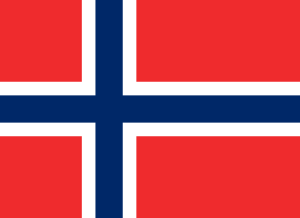Norway (except Svalbard)
 Norway is a member of the European Economic Area (EEA), which allows the country access to the single market of the European Union. Norway has joined the European Free Trade Association (EFTA) and is also part of the Schengen Area. The mainland territory of Norway has a total area of 385,207 km² and a population of about 5.3 million (14.0/km2). Its extensive coastline is broken by huge fjords and facing the North Atlantic Ocean and the Barents Sea. Because of the Gulf Stream and prevailing westerlies, Norway experiences higher temperatures and more precipitation than expected at such northern latitudes, especially along the coast. The northernmost part has a mostly maritime sub-arctic climateThe average weather we would expect over a long period of time (seasons, years, decades). Climate varies from place-to-place across the Earth. Climate is determined by long-term (over at least... More.
Norway is a member of the European Economic Area (EEA), which allows the country access to the single market of the European Union. Norway has joined the European Free Trade Association (EFTA) and is also part of the Schengen Area. The mainland territory of Norway has a total area of 385,207 km² and a population of about 5.3 million (14.0/km2). Its extensive coastline is broken by huge fjords and facing the North Atlantic Ocean and the Barents Sea. Because of the Gulf Stream and prevailing westerlies, Norway experiences higher temperatures and more precipitation than expected at such northern latitudes, especially along the coast. The northernmost part has a mostly maritime sub-arctic climateThe average weather we would expect over a long period of time (seasons, years, decades). Climate varies from place-to-place across the Earth. Climate is determined by long-term (over at least... More.
The following information aims at providing an overview of the most common permit types relevant for scientists travelling to and working in Norway.
National rules and regulations are given for the following categories:
- Cross border travel (persons, equipment, samples, chemicals),
- Access to specific areas,
- Permits to conduct fieldwork and collect samples,
- Field instrumentation,
- Safety equipment and
- Regional/local permits.
Additional information sources relevant for conducting science in Norway are also listed.
Disclaimer: INTERACT takes no legal responsibility for the information presented here. These pages only address the most common permit types. Certain studies may require specialist permits not covered here. New regulations may also come into force, permit conditions may change and links may become outdated or no longer work. If you encounter broken links, significant permit updates or have suggestions for additional permit types we can include, please contact us at https://eu-interact.org/contact/.
